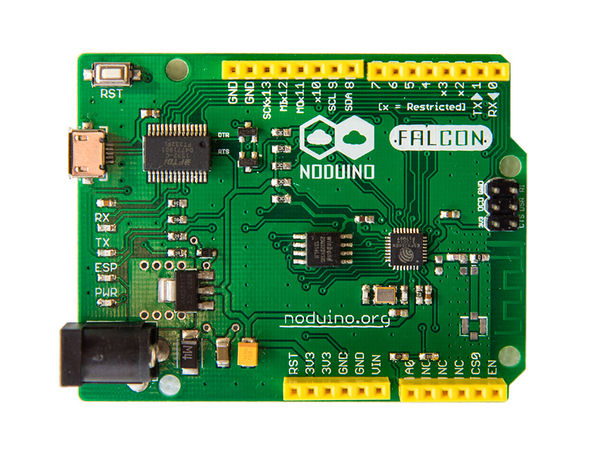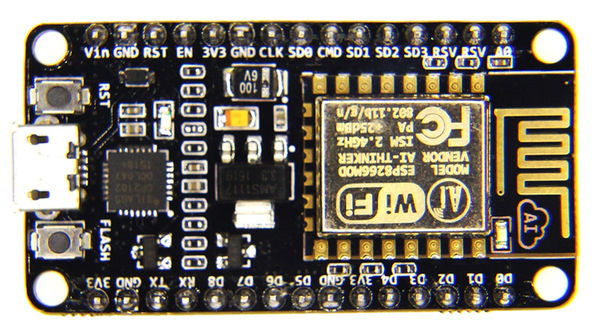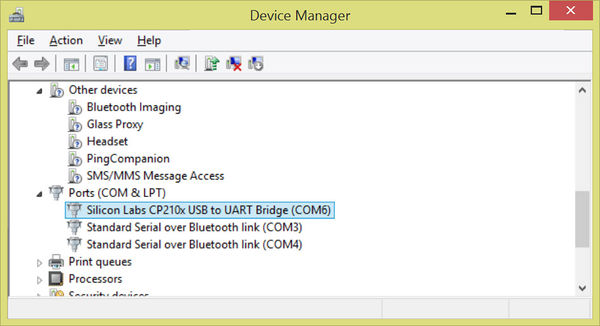Getting Started with Noduino SDK on Windows
来自Jack's Lab
目录 |
1 准备
准备一块 Noduino Falcon / nodemcu v1.0 开发板,一根 micro USB 连接线:
Noduino Falcon 开发板使用 FT232RL USB 转串口,在多数新的 Windows 系统下无需驱动,老的系统可到 FTDI 官网下载驱动
nodemcu v1.0 开发板使用 CP2102 这颗 USB 转串口芯片,到芯片厂家官网下载 Windows 版的驱动:http://www.silabs.com/products/mcu/Pages/USBtoUARTBridgeVCPDrivers.aspx
插上USB,系统发现开发板的串口端口为 COM6:
2 准备
先安装必要的工具
- 安装 Git for windows
- 安装 mingw32-make (或直接将 mingw32-make.exe 改名为 make.exe 放在 /PATH/TO/GIT_For_Win/usr/bin 下即可)
- 安装 python 2.7
3 尝试 Noduino SDK
# clone the whole sdk $ git clone --recursive git://github.com/icamgo/noduino-sdk.git noduino-sdk # fetch the toolchain of esp8266 $ cd noduino-sdk/toolchain/dist $ wget http://noduino.org/toolchain/win32-xtensa-lx106-elf-gb404fb9-2.tar.gz $ cd .. $ ./gen.py # generate the toolchain (you need Python 2.7)
尝试点灯的例子
# try the first example $ cd ../example/noduino/blink # upload the example to dev board through serial $ make flash
上传完之后,你会很快看到板子靠近 USB 口的 LED 开始在慢闪(大概 2s 间隔)
4 扩展阅读
产品级开发建议使用我们的专业 SDK:
- Getting Started with Noduino SDK on Linux
- Getting Started with Noduino SDK on Mac OS X
- Getting Started with Noduino SDK on Windows
学习、研究、创客可以尝试:
- Getting Started with Noduino on Linux
- Getting Started with Noduino on Mac OS X
- Getting Started with Noduino on Windows
- ESP8266 的各种问题参考:


